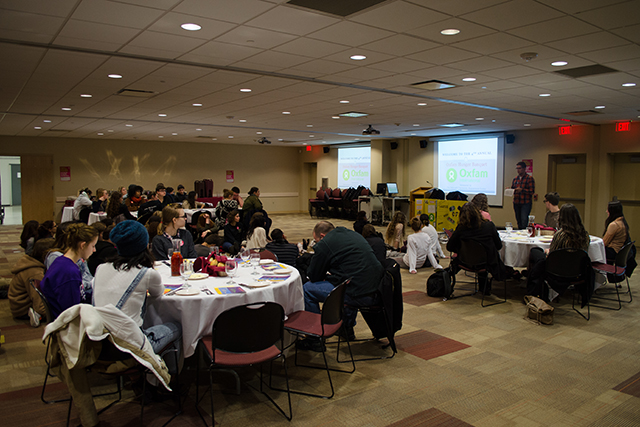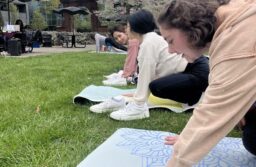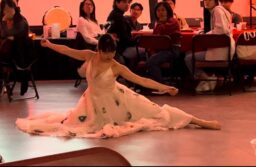
Photo by Nicole Williams
The Civic and Community Engagement Center sponsored their annual Oxfam Hunger Banquet in the Alumni Lounges on Wednesday. Moderated by Sean Farrell, the event focused on spreading awareness to Ramapo students about poverty levels around the globe.
“You might think hunger is about too many people and too little food, which is not the case,” Farrell spoke. “Our rich and bountiful planet produces enough for all of us to have three square meals a day. Hunger is about power.”
Upon entering the event, students were asked to pull a random slip of paper from an envelope telling them their economic standing, and thus where they would be seated during the event. The seating was organized to reflect the dispersal of wealth among the world’s population. The upper class had the smallest section, but had tables with a full restaurant-esque setting, along with baskets of bread. The middle class tables consisted of simply utensils. The lower class, the largest group, sat on the floor in between the other classes, surrounded by garbage.
Before the meal simulation began, Farrell asked members of each class to stand up, and after giving them a new identity and a background story, moved them around depending on whether the story had left them wealthier or more financially burdened. After the meal simulation, the banquet ended with students sharing their thoughts on the event, and by trading stories of the types of poverty students had encountered.
Like most of the students attending, Zachary Garfi was labeled lower class.
“The lower class was a bit uncomforting. It was interesting, but sitting in between the other classes made me feel weird,” he said.
When asked about the lower class meal, a small portion of rice on a napkin, Garfi commented, “The meal was very small — rice in a napkin was not very filling. It was very, very eye-opening.”
Like Garfi, Rachel Kozan also started at the bottom, but rose up to the middle class. “Originally, I was placed in the low income class, but then I made my way up here, to the middle income,” Kozan said while eating the middle class dinner, a plate of rice and beans. “I was very sad about being placed in the lower section. Moving up was a relief.”
On the presentation and poverty simulation, she commented, “This taught me that there are a lot more people who are actually in poverty than I thought. Looking around the room you see there were middle income people, a little bit of high class – there were like none – and most people were sitting on the floor, surrounded by garbage. That was eye-opening.”
Across the room from Kozan sat Katrina Buczkowski, one of the lucky few to be seated at the high class tables.
“Really, I was kind of happy about being in the upper class, because I knew I was going to get to eat, or have privileges,” Buczkowski remarked. “But having to look at everyone else, and especially when we were served and we didn’t even have to get up to get our food, was awkward. It made me feel really awful.”
The upper class was served a three course meal, while seated only a few feet away from those on the floor in poverty.
“It was kind of cool because it was mentioned how the meal was like what we get just by attending this school,” said Buczkowski. “It seemed pretty normal, but when you see that other people are just getting a handful of rice, it’s like ‘oh, I guess this is a bigger deal than I thought it was.’”
aleight@ramapo.edu





